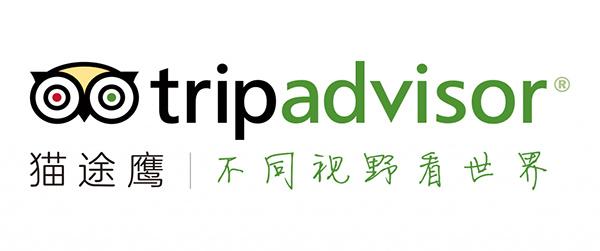
Hulunbuir Culture
Known for its most plentiful and excellent pastures in China, Hulunbuir is also the home to 42 ethnic minorities including Han, Mongolian, Hui, Manchu and Korean, with the Mongol, Daur, Evenki and Oroqen as the major ones. The ethnic minorities with a large population have their own relatively concentrated residence; however it is not the residence of a single ethnic group, but a living area for multi-ethnic groups. They follow their own customs respectively and live harmoniously with other nationalities.
Ethnic Groups
The minority groups live in different regions of Hulunbuir, with the overall distribution as follows:
The Mongolians are the most populous minority in the league, distributed in various banners and cities, with 60.7% of its population in pastoral areas, the New Left Banner and the New Right Banner hold the largest portion, followed by Hailar, Zalantun and Yakeshi.
The Han nationality covers 13 banners and cities in the league, accounting for 87.6% of the total population of the league, wherein Yakeshi and Zalantun have the largest portion, taking up 17.5% of the total population of the league while the least portion lies in the New Right Banner taking up only 0.33 %.
40.9% of the Daur population lives in the autonomous region, 22.8% in the Ewenki Banner and the rest in other Banner cities. 38.6% of the Ewenki live in its autonomous banner, and the rest in Morin Banner, Old Banner, Arun Banner, Zhalantun city and Left Banner, accounting for 51% in total.
70.9% of Oroqen population live in its autonomous Banner, with 18.2% in Morin Banner and Zhalantun. Most of the Manchus live in rural areas, accounting for 63% of its population, with the most concentrated area in Zhalantun Suburb, accounting for 26.4%, 26.9% in forest district and 3.5% in pastoral area. 22% of the Hui people live in Yakeshi city, followed by Hailar city, Right Banner and Left Banner. The Hui ethnic group accounts for the largest proportion of the urban population, reaching 20.8 percent.
Ethnic Banners
Up to 2018, Hulunbuir has jurisdiction over 2 districts, 4 banners , 3 autonomous banners and 5 county-level cities, covering 68 towns, 19 townships (including 13 ethnic townships), 19 sumus (including 1 ethnic sumu), 36 sub-district offices. The people's government of Hulunbuir is located in Hailar district.
There are 4 banners and 3 autonomous banners in Hulunbuir
| English Name | Chinese Name | Population | Area |
| Arun Banner | 阿荣旗 | 278,744 | 12,063 |
|
(Xin Barag Barun Banner) |
新巴尔虎右旗 | 36,356 | 25,102 |
|
(Xin Barag Jun Banner) |
新巴尔虎左旗 | 40,258 | 22,000 |
|
(Huqin Barag Banner) |
陈巴尔虎旗 | 58,244 | 21,192 |
| Oroqen Autonomous Banner | 鄂伦春自治旗 | 223,752 | 59,800 |
| Ewenki Autonomous Banner | 鄂温克族自治旗 | 134,981 | 19,111 |
| Morin Dawa Daur Autonomous Banner | 莫力达瓦达斡尔族自治旗 | 276,912 | 10,500 |
Local Customs
Different ethnic groups living in Hulunbuir contributes to the diverse folk customs and nomadic culture, attracting people all around the world along with the amazing grassalnd scenery.
-
Ethnic Festivals: Besides some Chinese traditional festivals, people in Hulunbuir also celebrates their traditional festivals such as Nadam Festival, Aobao Meeting and Yi Mu'er Festival which are celebrated all over Hulunbuir; Mi Kuolu Festival and Sebin Festival, being a traditional festival of Ewenki people to celebrate the harvest, as well as the traditional Bonfire Festival of Oroqen people.
-
Folk Art : In the towns, rural areas and forest districts of Hulunbuir where the Han nationality is relatively concentrated, people usually hold recreational activities during the Spring Festival, Lantern Festival and the slack farming season. The main activities are Yangko dance (a popular rural folk dance), Errenzhuan (a song-and-dance duet popular in the Northeast of China), solo performance, in which the player sings and dances, as well as ice sculpture, ice lantern and lantern exhibition, besides, the city also hold fireworks show.
-
Ethnic Costumes: There are 42 ethnic minorities living in Hulunbuir. The differences in living environment, customs and ethnic cultures have formed various patterns and styles of ethnic costumes. Mongolian takes up the most of the total ethnic population, so the Mongolian costume is the most common one seen in Hulunbuir. Mongolian costumes are gorgeous, beautiful and unique, with a strong grassland style, consisting of a hat, deel, boots and accessories. You should try putting on the costume when you come to Hulunbuir, you will find yourself in another exotic style.
-
Food Culture: Most people in Hulunbuir still keep the custom of their origin, and their staple food includes porridge, noodles, steamed bread, rice, etc. However, people living in the western region generally drink milk tea, eat beef and mutton, which is same as the Mongolian, Daur, Ewenki and Russian, the only difference is that the Han people eat more vegetables. Besides the common Mongolian food, Hulunbuir has its own specialties including Roasted Lamb Legs, Whole Fish Feast, Mongolian hot pot, Mongolian pot tea, blood sausage, deep-fried lamb’s tail, Russian Meal in Mongolian Style and etc.
Keep Reading












